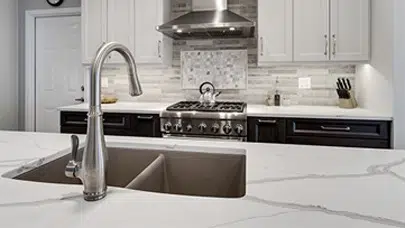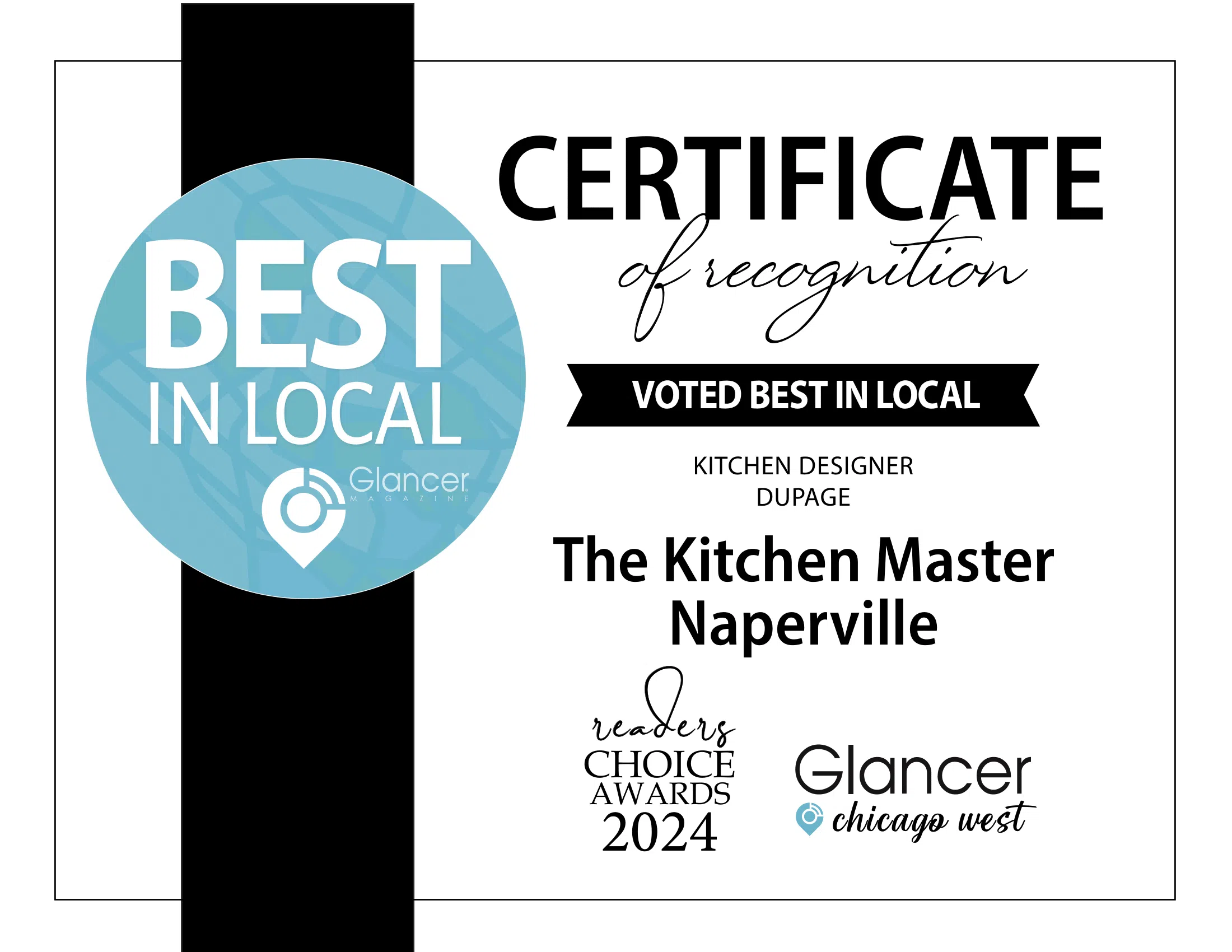What’s the Obsession Behind Farmhouse Sinks?

There’s a totally modern reason to love farmhouse sinks and it has little to do with nostalgia, although good looks are a part of their appeal.
It’s a matter of practicality, plain and simple. Farmhouse sinks, also known as apron-front sinks, are usually designed to be larger and deeper than a standard single or double bowl sink. Their installation also usually allows the front “apron” to overhang lower cabinets; the countertop often extends slightly over the back and side edges of the basin. Water can easily be swept from the counter into the sink, and drips from the front are more likely to land on the floor rather than running down the front of supporting cabinetry.
Practical and Pretty
The first farmhouse sinks were designed strictly for function, during a time when water had to be hauled by hand. It was a great convenience to have a large basin to contain the precious water. Large and deep, early farmhouse sinks probably served multiple purposes, from washing clothes and linens to bathing babies. As one of the first known kitchen “improvements,” they were built to multi-task. It’s entirely possible that rinsing vegetables and cleaning cooking pots were minor functions of those early farmhouse sinks.
Early sinks might have been forged of metal or made of wood, evolving into sinks of porcelain-covered cast iron. Today, apron front sinks are available in materials that range from copper to stainless steel, fireclay and modern synthetics, as well as traditional porcelain. Familiar white is still the most popular, but they are also manufactured in a variety of colors, and some boast nostalgic patterns or stylish grooves and embellishments on the front apron. There are single, double and pro-style triple-bowl farmhouse sinks and even outdoor varieties that can double as gardening sinks.
Major Advantages
Modern kitchens grew smaller over the years and new plumbing and appliances reduced the need for those large multi-purpose kitchen sinks. Homemakers also cooked and baked less, and dishwashers eliminated the need for hand washing dishes and cookware. Kitchen sinks became shallower, and double bowl sinks became the new “modern convenience.”
One major disadvantage, however, of the smaller kitchen sink, was that large soup pots, turkey roasters and cookie sheets became difficult to wash, even if they were used only rarely.
The result? A new and very contemporary love affair with Grandma’s efficient farmhouse sink!
Trendy Looks and Uses
Today, it’s not only new farmhouse sinks that find their way into modern interiors. True antiques, sometimes with integrated drainboards and tall backsplashes in addition to the front apron, are a stylish focal point in contemporary kitchens. But they can be hard to find. Commercial-style apron front stainless steel versions complement Euro-tech kitchens, but can easily be scratched on the front apron.
A farmhouse sink doesn’t have to be huge to be an effective addition in a modern kitchen, however, so even if you only want an apron-front veggie sink in your kitchen, you can enjoy that nostalgic appeal all year long.
If you’d like to talk about the best ways to incorporate a farmhouse sink into your upcoming kitchen renovation, contact The Kitchen Master to schedule a consultation.
Request Your Free Consultation
At The Kitchen Master, we’ve helped hundreds of clients create custom kitchens to make their homes more attractive, functional and inviting. Consider some of the following ideas as you plan your renovation to create the kitchen you’ve always imagined. 1. Practical and stylish cabinetry can enhance any kitchen. Kitchens with… Read more
View latest blog posts







